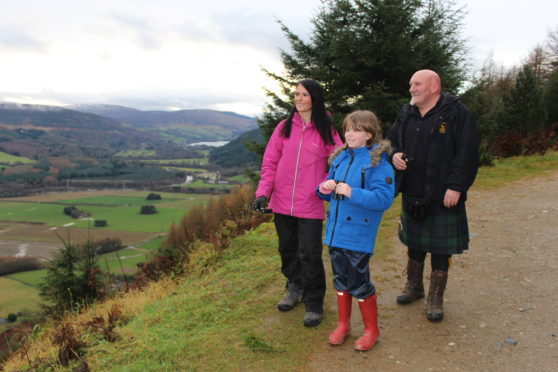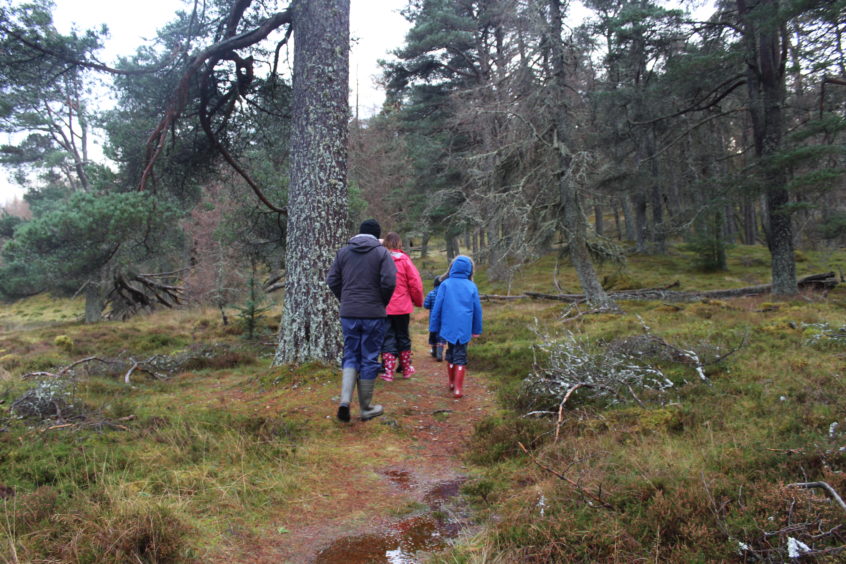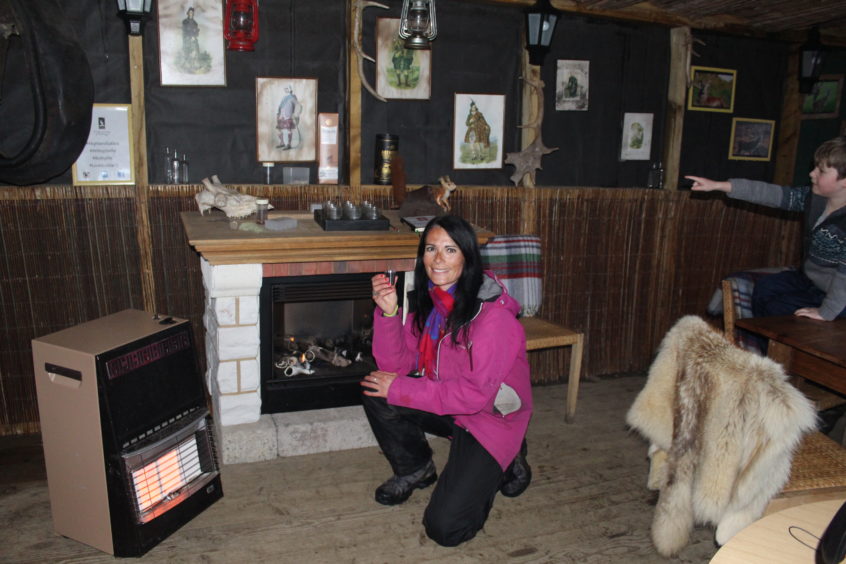Gayle heads into the wilderness on a Winter Watch Safari in Perthshire
A chilly wind may be whistling down the glen but huddled inside the mountain bothy, mug of steaming hot chocolate in hand, I’m roasty toasty.
The cold weather is definitely beginning to bite when I join a Winter Watch Safari run by Aberfeldy-based Highland Safaris, and I’m glad of the chance to warm up in the small wooden hut.
My guide for the afternoon is cheery and kilt-clad Jim Scotland.
After a quick debrief, and a check that everyone has decent walking gear, he squeezes six of us into his Land Rover and off we head.
The safari offers the opportunity to escape into a sub-arctic wilderness to marvel at breathtaking scenery and discover a landscape steeped in history, culture and brimming with wildlife.
As we climb up into Dull Forest, Jim’s and sense of humour shines through, as does his encyclopedic knowledge of wildlife.
“Have any of you ever seen a capercaillie?” he asks. We all shake our heads.
“They’re the size of turkeys and they’re known as ‘horse of the woods’ because of the clip-clopping noise they make when they chase you!
“Even David Attenborough was chased by a capercaillie, so watch out!”
On a more serious note, Jim tells us while the birds became extinct in Scotland in the late 18th century, they were reintroduced here last century. They’re still at risk, however, because pine martens eat their eggs.
Another fact Jim tells us is that gorse bushes make homes for all sorts of birds, including robins and wrens. “They make wee nests in the gorse, and because it’s so prickly, it keeps them safe from predators,” he explains.
He encourages us to keep our eyes peeled for red squirrels and shows us pine cones chewed by the cute creatures.
Pointing to fluffy lichen hanging from trees – which has a greenish tint and is tangled and tufty – he tells us this is known as Old Man’s Beard. Seven-year-old Reuben Wilkinson finds this hilarious, while his big sister, Deia, 10, states matter-of-factly that she knew this already.
“Squirrels collect lots of this for their dreys,” says Jim. “It’s soft and it dries out very quickly so it’s good for tinder if you ever want to make a fire.”
Another fascinating fact about Old Man’s Beard is that it grows on the north side of trees – the wettest side, says Jim.
“Just look at the lichen on a tree and you’ll be able to tell which way North is!” he chirps.
“Lots of lichen also tells you there’s great air quality here in Dull Wood. You’d probably not find much in London!”
Pausing at a dead tree, Jim asks if we know what made the holes through it. Deia pipes up with: “A woodpecker?”, and she is correct.
“The birds target soft, rotten trees,” says Jim. “Believe it or not, they’re able to hear insects moving about inside.”
Reuben is curious to know why woodpeckers don’t get headaches when they drum away at trees with such force. Apparently, says Jim, their brains are encased in “bags of jelly” which work like shock absorbers. Who knew!
After a while, we come to a fantastic viewpoint, high over the Strathtay Valley, where we pause to take pictures. It really is awe-inspiring.
Back in the vehicle, we drive on until we come to a clearing in the woods. We get out, gaze at the distant hills, and then follow Jim up an inviting tree-lined path. Here, he’s truly in his element.
“Look at this,” he beams, picking up a handful of springy, damp sphagnum moss.
“This has great antiseptic properties – it was used in the war – so if you ever have a wee injury, forget Germolene and apply some of this stuff!”
He also shows us “star moss”, a green herb which he says can be used as natural alternative to a toothpick!
Another fascinating find is a scattering of owl “pellets”. Reuben’s eyes light up when he hears what these are – food regurgitated by owls! Gross!
As we’re strolling, a buzzard and then what Jim reckons is a woodcock, fly out in front of us. Cue more shrieks of excitement all round.
But with daylight fading and the temperature dropping, the bothy Jim drives us to is a welcome sight.
Inside, he cracks open a bottle of whisky for the adults among us (me, Lesley and John-Paul Wilkinson – Reuben and Deia’s parents) and pours us a wee dram. To say it warms the cockles would be an understatement.
Then, while chatting us through some of the objects displayed such as antlers, a deer’s skull and a stuffed squirrel, he pour hot chocolates and dishes out shortbread.
On our way back to base, we have incredible views of Schiehallion, its peak, soon to be shrouded in snow, poking through the mist.
Two roe deer grace us with their presence as we stop to admire a cup and ring marks at a stone circle, and a heron croaks its annoyance at being disturbed.
Alas, we don’t spot any mountain hares, ptarmigans or capercaillies on this trip, but it didn’t matter because we have a whale of a time, and who knows, maybe the legendary “horse of the woods” will come out to say hello next time.
info
Winter Watch Safaris run until February and include tea, coffee, shortbread and a dram in a heated mountain bothy.
They take around 2.5 hours and run at 9.30am and 1pm. It’s £45 peer adult, £30 for those aged 12 to 18, and £25 for children.
Wildlife identification sheets and fact files, binoculars and a telescope are made available, as are hats and hand warmers if required.
For more details and to book, see www.highlandsafaris.net


















